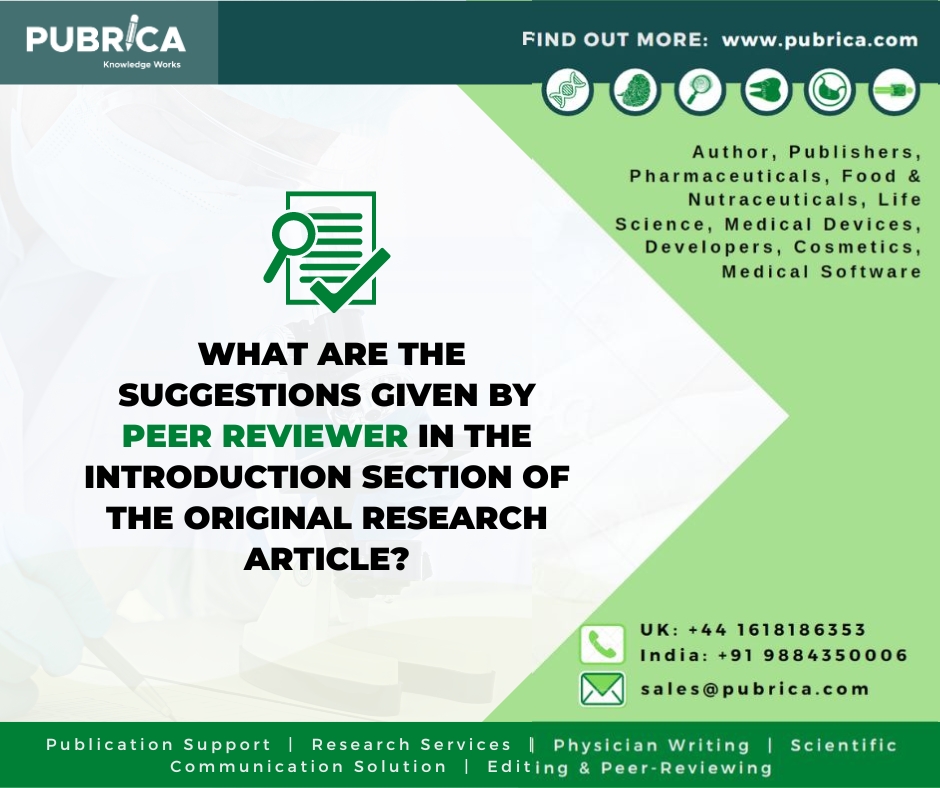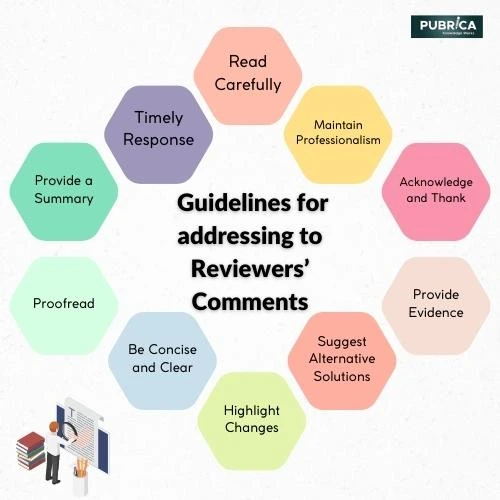
Variables Used in Data Extraction for Prospective Cohort Studies in a Systematic Review
August 16, 2023
What Are the Suggestions Given by Peer Reviewers in the Introduction Section of the Original Research Article?
August 29, 2023Understanding Incidence and Prevalence in Toxicology: Biostatistics and Epidemiology Principles
Peer review is crucial for publishing scientific papers in high-impact journals, ensuring quality, originality, and accuracy. After manuscript peer review, authors may revise the manuscript based on editors’ and reviewers’ comments, which can significantly improve the manuscript. These comments are vital for communication between authors and reviewers. Most journals invite at least two to three reviewers, and sometimes up to six, but the more reviewers invited, the higher the likelihood of receiving harsh, conflicting comments on the manuscript.
Introduction
Even though journals approve the majority of updated submissions, it is common to receive rejection after the first, second, or even third round of editing. To reduce the possibility of this “mistake”-rejection following revision, the writers should endeavour to answer the remarks as thoroughly as possible. There are no hard and fast manuscript review guidelines that lead to secure, assured approval following modification. Following is a discussion of some broad ideas and sharing of personal experience, whether positive or negative, in replying to reviewers’ remarks.
- To know more about Response to reviewer services, check our study guide on How do you respond to the reviewers of your manuscript?
What are the rules for peer reviewers?
Peer reviewers play a critical role in maintaining the quality of academic and scientific research. Their responsibilities include evaluating submitted manuscripts editing impartially, maintaining confidentiality, and providing constructive feedback. Reviewers must disclose conflicts of interest, ensuring unbiased assessments. Constructive and respectful critiques aid authors in improving their work. It’s crucial to adhere to journal guidelines and review timelines. Reviewers should focus on the paper’s content, methodology, significance, and originality rather than personal biases. Confidentiality is paramount; reviewers must not share manuscript format details. Upholding ethical standards fosters credibility and advances scholarly discourse through rigorous, fair, and unbiased peer-review processes.
Addressing reviewers’ comments professionally and constructively is essential to improving the quality of your work and demonstrating your commitment to rigorous research. Here are some guidelines to effectively address reviewers’ comments:
- Read Carefully: Thoroughly understand each comment and suggestion made by the reviewers. This shows that you respect their feedback and are committed to improving your work.
- Maintain Professionalism: Keep your tone respectful and professional throughout your Response. Avoid defensive or confrontational language, even if you disagree with a comment.
- Acknowledge and Thank you: Begin your Response by expressing gratitude for the reviewers’ time and effort in reviewing your work. This sets a positive tone for the interaction.
- Provide Evidence: When explaining why you made certain choices or decisions, offer evidence from your work or existing literature to support your stance.
- Suggest Alternative Solutions: If you disagree with a comment, explain your reasoning respectfully. You can also offer alternative solutions that address the concern raised by the reviewer.
- Highlight Changes: Clearly outline your changes in Response to the reviewers’ comments. This makes it easier for the reviewers to see your revisions and demonstrates your commitment to improving your work.
- Be Concise and Clear: Keep your responses concise and focused on the main points. Avoid unnecessary technical jargon or verbosity that could make your Response difficult to understand.
- Proofread: Ensure your Response is well-written, free from grammatical errors, and communicates your ideas.
- Provide a Summary: At the end of your Response, summarise the key changes you’ve made based on the reviewers’ feedback. This gives the reviewers an overview of your efforts to address their concerns.
- Timely Response: Address the reviewers’ comments within the timeframe specified by the journal or conference. This demonstrates your commitment and professionalism.

Remember that the goal is to improve the quality of your work and contribute positively to the scholarly community. Responding to reviewers’ comments thoughtfully and respectfully enhances your chances of having your work accepted for publication.
The key to success is persistence:
Editors and reviewers rely on each other’s expertise for final decisions, so following their suggestions is crucial. Authors may find obtaining manuscript acceptance after revision tedious, but focusing on improving the manuscript and receiving positive feedback is essential. Acceptance in the same or other journals signifies the effort paid off, so persevere and don’t give up. The manuscript will likely find a suitable publication home. Good luck to those revising or planning to revise.
- Check out our sample Response to reviewer examples to see how the Response to the reviewer sampleis structured.
Conclusion
In conclusion, addressing reviewers’ comments for the authors is a pivotal step in refining research work. Adopting a professional and respectful tone, acknowledging reviewers’ efforts, and effectively responding to each comment demonstrates a commitment to improvement. Constructive criticism should be embraced, clarifications provided when needed, and changes highlighted clearly. The Response should be concise, well-organized, and supported by evidence and references. Accepting valid concerns with well-reasoned explanations showcases a commitment to scholarly rigour. By following these guidelines, authors can enhance the quality of their work, contribute positively to the academic discourse, and increase the likelihood of successful publication.
About Pubrica
Pubrica adheres to the highest standards and regulations of journal publishing ethics in all phases of services and operations. Pubrica follows the International Council of Medical Journal Editors’ (ICJME) authorship rules, and the scope of services will be continuously updated in accordance with the Committee of Publication Ethics (COPE) and International Society of Medical Publication Professionals (ISMPP) principles.
References
- Wong GL. Tips for Responding to Reviewers’ Comments-from an Editor’s or Reviewer’s Points of View. Gut Liver. 2019 Jan 15;13(1):7-10. doi: 10.5009/gnl18361. PMID: 30665279; PMCID: PMC6347010
- Guyatt GH, Brian Haynes R. Preparing reports for publication and responding to reviewers’ comments. J Clin Epidemiol. 2006;59:900–906. doi: 10.1016/j.jclinepi.2006.05.004.

14 years of expertise in clinical research with a doctoral distinction in life science.


